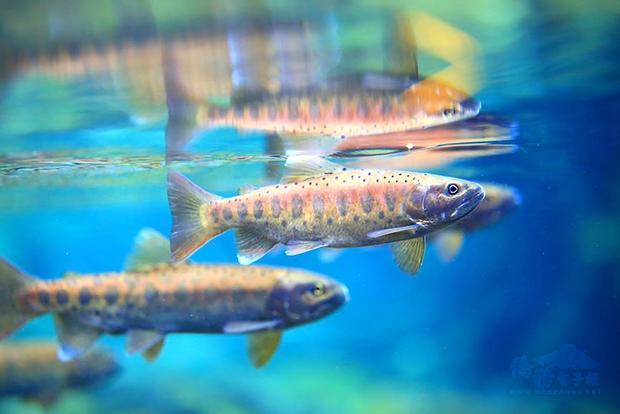
The nation has 10,532 Formosan landlocked salmon in several mountain creeks, a field survey by the Shei-Pa National Park administration showed.
This was the first time that the number of the endangered species had exceeded 10,000 since the park administration started its field surveys in 1999.
The salmon, which is also known as a “national treasure fish” or Taiwanese salmon, is endemic to Taiwan and at one point was close to extinction.
By the time the park agency was established in 1992, the number of Formosan landlocked salmon had dwindled to about 200.
The park said it spent last year surveying the number of Formosan landlocked salmon and released the results this week.
Specifically, the largest group of Formosan landlocked salmon, numbering 5,392, was found in the Cijiawan Creek in Taichung. The creek has already been identified by researchers as a natural habitat of the species.
Another 1,126 were found in the Rahao Creek and 121 in the Arikatsu Creek, in the upper reaches of Taichung’s Dajia River, and 136 in the Leshan Creek.
Nantou County also hosts large numbers of the fish, with 3,757 found in the Hehuan Creek.
Salmon in these creeks were growing naturally and steadily, the park said, adding that there is no need to raise the fish in hatcheries and release them into creeks.
The park attributed the success in restoring the natural growth of the species to a clear conservation policy that was established following a seminar hosted in 2000, which set a goal of restoring the Formosan landlocked salmon in Dajia River’s five creeks within 30 years.
The park spent the first four years trying to raise farmed Taiwanese salmon to ensure that the original genes of the species could be preserved.
It then worked to restore growth in the Cijiawan Creek by improving its five check dams and expropriating 8.1 hectares of private farmland to ensure sufficient waterflow and help preserve the forests, the park said.
Wuling Farm was asked to reduce its arable land to 5 hectares, it added.
In addition to the Cijiawan Creek, the park released salmon from the hatcheries into creeks that records show used to host the species.
Since 2000, the park and the Atayal community have been patrolling these creeks to protect these farmed salmon, it said.
The agency has set new conservation goals: From now to 2022, it would restore the population of salmon in the Sijielan Creek and Nanhu Creek, and by 2022, traces of the salmon should be found in all five major tributary creeks of the Dajia River.
Salmon from the hatcheries are to be released every August, instead of March, it added.
To raise their survival rate, the fish should be at least 10cm long and released every 100m along the same creek, it said.
The check dam at the intersection of the Skitlan and Ikawan creeks has been damaged, which should raise the water level in both creeks, it said.
However, this should improve the natural habitats for the salmon, it said.
The park is also working with the Taroko National Park Administration by entrusting the latter with the task of monitoring the salmon released in the creeks.